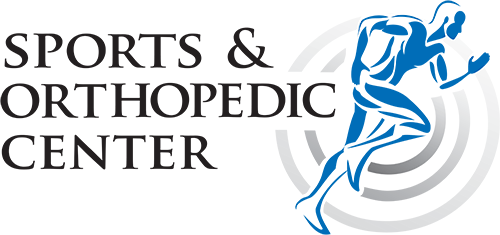Dr. Gupta was great. I was in pain day and night and nothing would take care of the pain. I couldn’t sleep. After I did the anterior hip surgery, after recovery, I was great. I can do stairs, the treadmill, live my life with no problem. I could not walk in the mall before, and now I can. I recommend Dr. Manish Gupta 100% to everyone who I meet who has a problem with the hip. He’s a wonderful doctor!
HIP ORTHOPEDIC – SURGICAL & NONSURGICAL OPTIONS
Hip pain is a common complaint that can be caused by a wide variety of problems. The precise location of your hip pain can provide valuable clues about the underlying cause. it is important to get to the bottom of your pain in order to receive the most effective hip pain treatment.
If you’ve experienced hip joint pain for more than a week or the pain prohibits you from walking comfortably or sleeping, our hip orthopedic surgeons can help to find the right treatment for you. Our mission at Sports & Orthopedic Center is to help you manage your pain and get back to your physical activities as quickly as possible.
COMMON CAUSES OF HIP PAIN INCLUDE:
- Hip bursitis: A bursa is a closed fluid-filled sac that functions as a gliding surface to reduce friction between tissues of the body. “Bursae” is the plural form of “bursa.” The major bursae are located adjacent to the tendons near the large joints, such as the shoulders, elbows, hips, and knees. When a bursa becomes inflamed, the condition is known as “bursitis.”
- Fractures: Older people, especially those suffering from osteoporosis, can fracture their hips during simple daily activities. Surgery is required for hip fractures.
- Hip arthritis or osteoarthritis: This is very common among those over 50 years of age and causes pain in the groin area and the front side of the thighs. This is a chronic condition that causes pain and stiffness, and is usually worse after activity. This condition occurs after bone cartilage is worn away or damaged and hip bones no longer move smoothly.
- Hip dysplasia: Hip dysplasia is a condition in which your hip socket doesn’t completely cover the ball of one of your thigh bones. Your hip is the biggest ball-and-socket joint in your body.
- Problems with the bone, hip joint, or surrounding cartilage: Acute infections need urgent diagnosis and care because they can cause joint destruction, as well as an overabundance of harmful bacteria and toxins, if untreated.
- Tendonitis: Hip tendonitis is painful inflammation or irritation of a tendon in the hip. It’s also called hip flexor tendonitis, or tendonitis of the hip. A tendon is a thick cord made up of tiny fibers that connect muscles to bones. When people have inflamed or irritated tendons, they may experience pain, tenderness and mild swelling near the affected joint
SOME FACTS ABOUT THE HIP
The hip, a ball-and-socket joint, is the largest weight-bearing joint in the body. When the joint is healthy, the head of the femur (thighbone) forms a round ball that fits into the acetabulum, a cavity at the base of the pelvis that forms the socket.
Ligaments connect the ball to the socket and keep them both firmly supported. The surfaces of the femoral head and the acetabulum are covered by a smooth, tough material known as articular cartilage, which cushions the bones and allows them to move easily. Around the rim of the acetabulum is a layer of fibrous cartilage called the labrum, which deepens the socket and provides a suction seal to hold the head of the femur firmly in place.
The other surfaces of the hip joint are covered by a thin, smooth tissue liner called the synovial membrane. This tissue produces a small amount of synovial fluid that acts as a lubricant and reduces the amount of friction that occurs when the bones move against each other.
HIP TREATMENT OPTIONS
NON- SURGICALS:
There are some non-surgical and conservative therapies to consider for the treatment of your hip pain:
- Rest: The doctor may recommend limiting the activities to allow the tissue to heal.
- Medications: Anti-Inflammatory medications may reduce pain and inflammation associated with this condition.
- Injections: Corticosteroid injections to the affected portion of the hip can provide short-term pain relief and reduced inflammation, when medication is ineffective or not an option.
- Physical Therapy: Certified Physical Therapists work closely with doctors to create an individualized program to maximize healing and restore function, strength and mobility.
MINIMALLY INVASIVE SURGERY
“Minimally invasive” is an umbrella term for any surgery less invasive than traditional open surgery. If you or a loved one has been diagnosed with a condition that may require surgery. Minimally invasive surgery refers to any surgical procedure that is performed by our hip orthopedic surgeon through tiny incisions instead of a large opening. Because your surgeon will make smaller incisions, you will likely have a quicker recovery time and less pain than traditional open surgery but with the same benefits as traditional surgery.
Minimally invasive surgery refers to any surgical procedure that is performed through tiny incisions instead of a large opening. Because your surgeon will make smaller incisions, you will likely have a quicker recovery time and less pain than traditional open surgery but with the same benefits as traditional surgery.
The benefits of minimally invasive surgery include:
- Smaller incisions
- Less pain
- Minimal to no scars
- Less blood loss
- Lower rate of complications
- Shorter hospital stay
Minimally invasive anterior hip replacement: With the Direct Anterior approach, your specially trained orthopedic surgeon is able to repair your painful hip through a natural space between the muscles of the anterior (front) portion of the hip, rather than making the incision on the posterior (back) side, which has the potential of damaging the muscles that make up the primary support system for the joint. These are the muscles you spend weeks and months rehabilitating after surgery.
During this procedure the hip joint is exposed between the anterior muscles, without the need to cut tissue or detach tendons. Once access is gained, the portion of the upper thigh bone (the femoral head and neck) and the hip socket (acetabulum) are prepared for the insertion of the hip replacement implant, just as in a traditional procedure.
Hip arthroscopy: is a procedure that allows the hip orthopedic surgeon to examine (and at the same time treat) the bones, ligaments and cartilage of the hip joint.
Hip arthroscopy is performed as minimally invasive surgery, small incisions allow microsurgical instruments to enter the hip joint. Hip arthroscopy can identify (and often remove) the causes of osteoarthritis of the hip. The arthroscopic camera enables the surgeon to see the interior of the hip, fluid is injected into the joint space to enlarge the space for the surgical procedure. Arthroscopic tools are used to repair damage to the hip and prevent osteoarthritis progressing. Hip arthroscopy is an examination method and treatment for hip pain, at the same time.
Conditions you can treat with an arthroscopy approach:
-
- Degenerative changes of the hip.
- Soft tissue injuries.
Important Safety Notes:
Hip replacement surgery is intended to relieve hip pain and improve hip function. However, implants may not produce the same feel or function as your original hip. There are potential risks with hip replacement surgery such as loosening, fracture, dislocation, wear and infection that may result in the need for additional surgery. Longevity of implants depends on many factors, such as types of activities and weight. Do not perform high impact activities such as running and jumping unless your surgeon tells you the bone has healed and these activities are acceptable. Early device failure, breakage or loosening may occur if you do not follow your surgeon’s limitations on activity level. Early failure can happen if you do not guard your hip joint from overloading due to activity level, failure to control body weight, or accidents such as falls. Talk to your doctor to determine what treatment may be best for you.
Our Hip Specialist can evaluate your condition to determine the best treatment option for you based on your case. Our offices are located in Coral Springs and Boca Raton.
Contact us to make an appointment today!
SCHEDULE AN APPOINTMENT
Common Orthopedic Conditions & Injuries
- Minimally invasive anterior hip replacement
- Arthroscopic treatments for:

Elizabeth B
Patient





